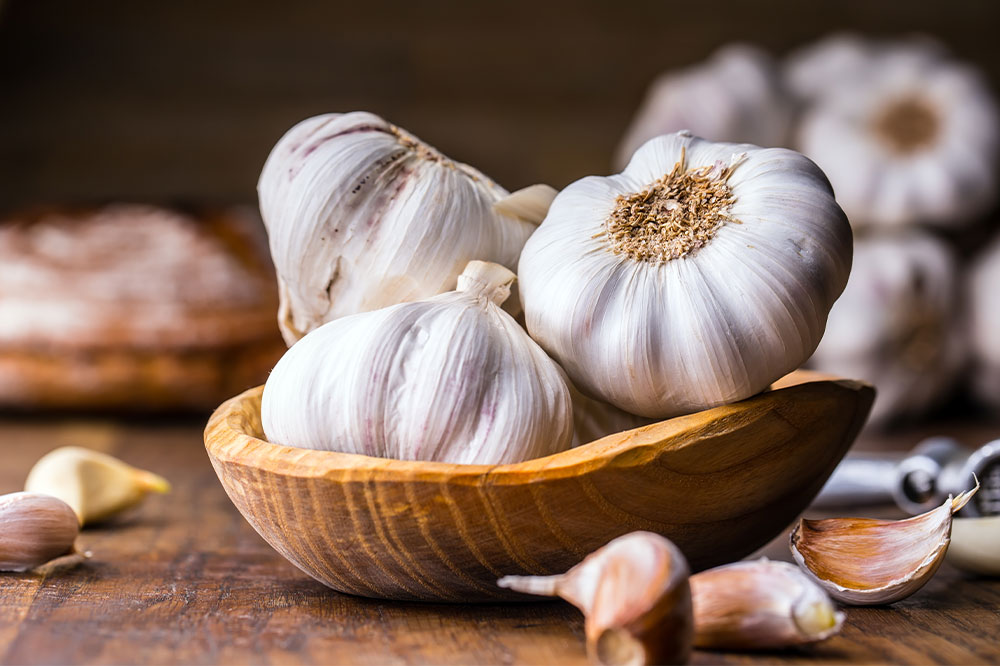6 foods that can reduce the risk of cancer

There are many types of cancers. Researchers are still trying to find the exact causes behind this condition. However, a number of studies have indicated that a person’s food choices can increase or decrease their risk of developing cancer. Fortunately, certain foods are known to be full of nutrients that can lower the chances of cancer in most people. Below is a list of foods that can reduce the risk of cancer.
Garlic
Garlic contains an active compound known as allicin, which is known to have anti-cancer properties. One study indicated that people who ate allicin-containing vegetables had a lower risk of stomach cancer. Try to include two to five grams (or one clove) of garlic in your meals daily to reduce cancer risk.
Broccoli
Broccoli contains sulforaphane. This is a plant compound that may have strong anti-cancer properties. Some studies also show that consuming broccoli can lower the risk of certain cancers such as colorectal.
Berries
These tiny fruits are loaded with antioxidants that can prevent various types of cancer, including colorectal and esophageal. Some excellent berries to eat include goji berries, raspberries, strawberries, and blackberries.
Turmeric
This yellow spice contains an active ingredient called curcumin. Curcumin may inhibit some kinds of cancer cells and even slow the spread of cancer or shrink tumors.
Green tea
Green tea is brimful of potent antioxidants and also contains epigallocatechin 3-gallate (EGCG). Nutrients in green tea may help prevent breast, liver, skin, esophageal, lung, and pancreatic cancer.
Tomatoes
Tomatoes are packed with a powerful antioxidant called lycopene. Studies show that lycopene can protect against the development of prostate and lung cancer.
Those already diagnosed with cancer should try to incorporate all the above foods into their meal plan. Additionally, doctors may prescribe them the following medications and therapies.
Lumakras
In 2021, the FDA approved Lumakas as a therapy option for KRAS G12C mutated lung cancer, referred to as non-small cell lung cancer (NSCLC).
Neulasta
Cancer treatments, like chemotherapy, can reduce white blood cell count, increasing the risk of infections. Neulasta contains a man-made form of protein that stimulates the growth of white blood cells.
Ibrutinib
Ibrutinib, commonly sold under the brand name Imbruvica, can treat various forms of lymphoma and leukemia.
Venclexta
Venclexta is prescribed for the treatment of chronic lymphocytic leukemia (CLL), small lymphocytic leukemia (SLL), and acute myeloid leukemia (AML).
Chimeric antigen receptor (CAR) T-cell therapy
CAR T-cell therapy involves taking T cells from a patient’s blood and modifying them in the laboratory, so they will attack cancer cells.
KYPROLIS® (carfilzomib)
Carfilzomib, sold under the brand name KYPROLIS®, is a prescription injectable drug used to treat relapsing or refractory multiple myeloma. It works by slowing or completely stopping the growth of cancer cells. Carfilzomib can be administered a few times in a week, since its treatment course spans over 28 days. One should be cautious since the injection might lead to life-threatening reactions. Doctors may prescribe other medications to prevent such severe reactions. However, if side-effects persist, the patient must notify a doctor at the earliest.
Xofigo® (radium-223 dichloride)
Xofigo® injection is given to male prostate cancer patients who no longer respond to surgery. It is used when the cancerous growth has spread only to the bones and not the other parts. Xofigo® contains a mildly radioactive form of radium named radium-223. It works by releasing a high dosage of radiation that can destroy cancer cells. Healthy cells receive a low dose or no radiation, causing fewer side effects. The injection is administered through a thin short tube called a cannula. It is given up to six times every four weeks. Patients may have to undergo blood tests in between the courses.
B-cell maturation antigen (BCMA) therapy
B-cell maturation antigen (BCMA) therapy is a novel form of treatment for multiple myeloma. BCMA is a cell surface receptor, and is typically found in higher levels in multiple myeloma patients. BCMA can be overexpressed on malignant plasma cells in the body. This overexpression causes the multiple myeloma cells to remain alive. BCMA therapy focuses on targeting these cells that are present in the tumors. There are three treatment modes that target BCMA, namely antibody-drug conjugates, bispecific antibodies, and anti-BCMA chimeric antigen receptor T-cell treatments.

